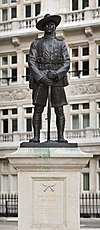Related Research Articles

Brigade of Gurkhas is the collective name which refers to all the units in the British Army that are composed of Nepalese Gurkha soldiers. The brigade draws its heritage from Gurkha units that originally served in the British Indian Army prior to Indian independence, and prior to that served for the East India Company. The brigade includes infantry, engineering, signal, logistic and training and support units. They are known for their khukuri, a distinctive heavy knife with a curved blade, and have a reputation for being fierce and brave soldiers.
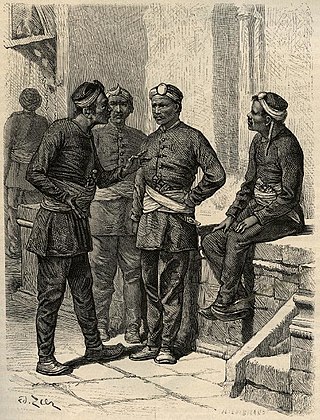
The Gurkhas or Gorkhas, with the endonym Gorkhali, are soldiers native to the Indian subcontinent, chiefly residing within Nepal and some parts of North India.
Gurkhas are soldiers from Nepal.

The Gorkha Kingdom was a member of the Chaubisi rajya, a confederation of 24 states, located at the intersection of Himalayas and the Indian subcontinent. In 1743 CE, the kingdom began a campaign of military expansion, annexing several neighbors and becoming present-day Nepal. The Gorkha Kingdom extended to the Marshyangdi River in the west, forming its border with the Kingdom of Lamjung. To the east, the kingdom extended to the Trishuli River, forming its border with the Nepal Mandala. The Gorkha Kingdom was established in 1559 CE by Prince Dravya Shah, the second son of King Yasho Brahma Shah of Lamjung. The prince replaced the King Mansingh Khadka Magar who previously ruled the region.

The Royal Gurkha Rifles (RGR) is a rifle regiment of the British Army, forming part of the Brigade of Gurkhas. Unlike other regiments in the British Army, RGR soldiers are recruited from Nepal, which is neither a dependent territory of the United Kingdom nor a member of the Commonwealth.
The 10th Princess Mary's Own Gurkha Rifles,, was originally a rifle regiment of the British Indian Army. The regiment was formed in 1890, taking its lineage from a police unit and over the course of its existence it had a number of changes in designation and composition. It took part in a number of campaigns on the Indian frontiers during the 19th and early 20th centuries, before fighting in the First World War, the Third Anglo-Afghan War and the Second World War. Following India's independence in 1947, the regiment was one of four Gurkha regiments to be transferred to the British Army. In the 1960s it was active in the Malayan Emergency and Indonesian Confrontation. It was amalgamated with the other three British Gurkha regiments to form the Royal Gurkha Rifles in 1994.
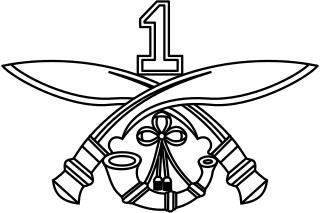
1st Gorkha Rifles (The Malaun Regiment), often referred to as the 1st Gorkha Rifles, or 1 GR in abbreviation, is the most senior Gorkha Infantry regiment of the Indian Army, comprising Gurkha soldiers of Indian Gorkha or Nepalese nationality, especially Magars and Gurungs, hill tribes of Nepal. It was originally formed as part of the East India Company's Bengal Army in 1815, later adopting the title of the 1st King George V's Own Gurkha Rifles (The Malaun Regiment), however, in 1947, following the partition of India, it was transferred to the Indian Army and in 1950 when India became a Republic, it was redesignated as 1st Gorkha Rifles (The Malaun Regiment). The regiment has a long history and has participated in many conflicts, including many of the colonial conflicts prior to Indian independence, as well as the First and Second World Wars. Since 1947 the regiment has also participated in a number of campaigns against Pakistan in 1965 and 1971 as well as undertaking peacekeeping duties as part of the United Nations.

The 3rd Gorkha Rifles or Third Gorkha Rifles, abbreviated as 3 GR is an Indian Army infantry regiment. It was originally a Gurkha regiment of the British Indian Army formed in 1815. This regiment recruit mainly Magars and Gurung tribes. They were present at a number of actions and wars including the siege of Delhi in 1857 to the First and Second World Wars. After the Partition of India in 1947 the regiment was one of the six Gorkha regiments transferred to the Indian Army as part of the Tripartite Agreement signed between India, Nepal and Britain at the time of Indian independence. Prior to independence, the regiment was known as the 3rd Queen Alexandra's Own Gurkha Rifles. In 1950 the regiment's title was changed to 3rd Gorkha Rifles. Since 1947 the regiment has participated in a number of conflicts including the 1947 and 1971 wars against Pakistan.

The 4th Gorkha Rifles or the Fourth Gorkha Rifles, abbreviated as 4 GR, is an infantry regiment of the Indian Army comprising Gurkha soldiers of Indian Gorkha or Nepalese nationality, especially Magars and Gurungs hill tribes of Nepal. The Fourth Gorkha Rifles has five infantry battalions. The regiment was raised in 1857 as part of the British Indian Army. In 1947, after India's independence, the Fourth Gurkha Rifles became part of the Indian Army as the Fourth Gorkha Rifles.

The 7th Gurkha Rifles was a rifle regiment of the British Indian Army, before being transferred to the British Army, following India's independence in 1947 and after 1959 designated as the 7th Duke of Edinburgh's Own Gurkha Rifles.
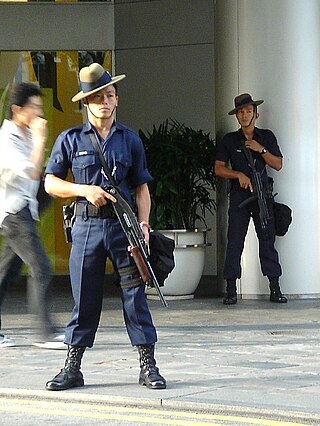
The Gurkha Contingent (GC) is a line department of the Singapore Police Force (SPF) consisting primarily of Gurkhas from Nepal, recruited by the British Army with the purview of the Government of Singapore. The contingent's roles are as a special guard force and counter-terrorist force.
Gurkha regiment or Gorkha regiment may refer to:

The Nepalese Army or Gorkha Army is the armed military Land warfare force of Nepal and a major component of the Military of Nepal.

At the time of Indian Independence in 1947, as per the terms of the Britain–India–Nepal Tripartite Agreement, six Gorkha regiments, formerly part of the British Indian Army, became part of the Indian Army and have served ever since. The troops are mainly from ethnic Gurkha communities of India and Nepal. A seventh Gorkha Rifles regiment was re-raised in the Indian Army after Independence to accommodate Gorkha soldiers of the 7th Gurkha Rifles and the 10th Gurkha Rifles who chose not to transfer to the British Army.

The 9th Gorkha Rifles is a Gorkha infantry regiment of the Indian Army and, previously, the British Army. The regiment was initially formed by the British in 1817, and was one of the Gurkha regiments transferred to the Indian Army after independence as part of the tripartite agreement in 1947. This Gorkha regiment mainly recruits soldiers who come from Nepal's Gorkhali Kshatriya community i.e. the Chhetri and Thakuri clans. Domiciled Indian Gorkhas are also recruited, and they form about 20 percent of the regiment's total strength. The 9 Gorkha Rifles is one of the seven Gorkha regiments of the Indian Army. The other regiments are 1 GR, 3 GR, 4 GR, 5 GR (FF), 8 GR and 11 GR.
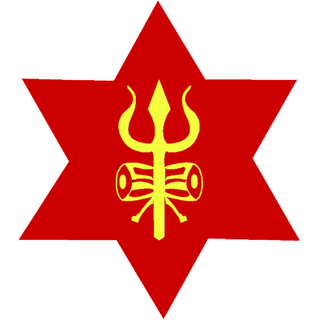
The Nepali Army, also referred as the Gorkhali Army, is the land service branch of the Nepali Armed Forces. After the Gorkha Kingdom was founded in 1559, its army was established in 1560, and was accordingly known as the Gorkhali Army. The army later became known as the Royal Nepali Army (RNA) following the Unification of Nepal, when the Gorkha Kingdom expanded its territory to include the whole country, by conquering and annexing the other states in the region, resulting in the establishment of a single united Hindu monarchy over all of Nepal. It was officially renamed simply to the Nepali Army on 28 May 2008, upon the abolition of the 240-year-old Nepalese monarchy, and of the 449-year-old rule of the Shah dynasty, shortly after the Nepalese Civil War.
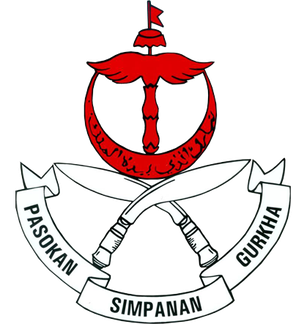
The Gurkha Reserve Unit (GRU), also referred to as the Royal Brunei Gurkha Reserve Unit, is a Nepalese special elite guard force and royal guard in the Sultanate of Brunei.

There is a large community of Nepalese in Singapore, consisting mostly of Gurkhas recruited from Nepal and their families.

Major (Retd) Tikendra Dal Dewan JP, is an ex- British Army Gurkha, a Gurkha leader/social worker/activist campaigning for equal rights of British Gurkhas. Dewan served in the British Army for thirty one years, United Kingdom Civil Services for eleven years and is the chairperson of the British Gurkha Welfare Society (BGWS) a welfare organisation for Gurkhas in the United Kingdom and Nepal and former CEO of Gnergy an energy company based in the UK run by retired British Gurkha veterans.
References
- ↑ "Untitled Document". Archived from the original on 2 November 2005.
- 1 2 Gurkha recruitment legacy of past, says Nepal; calls 1947 tripartite agreement 'redundant', Times of India, 31 July 2020.
